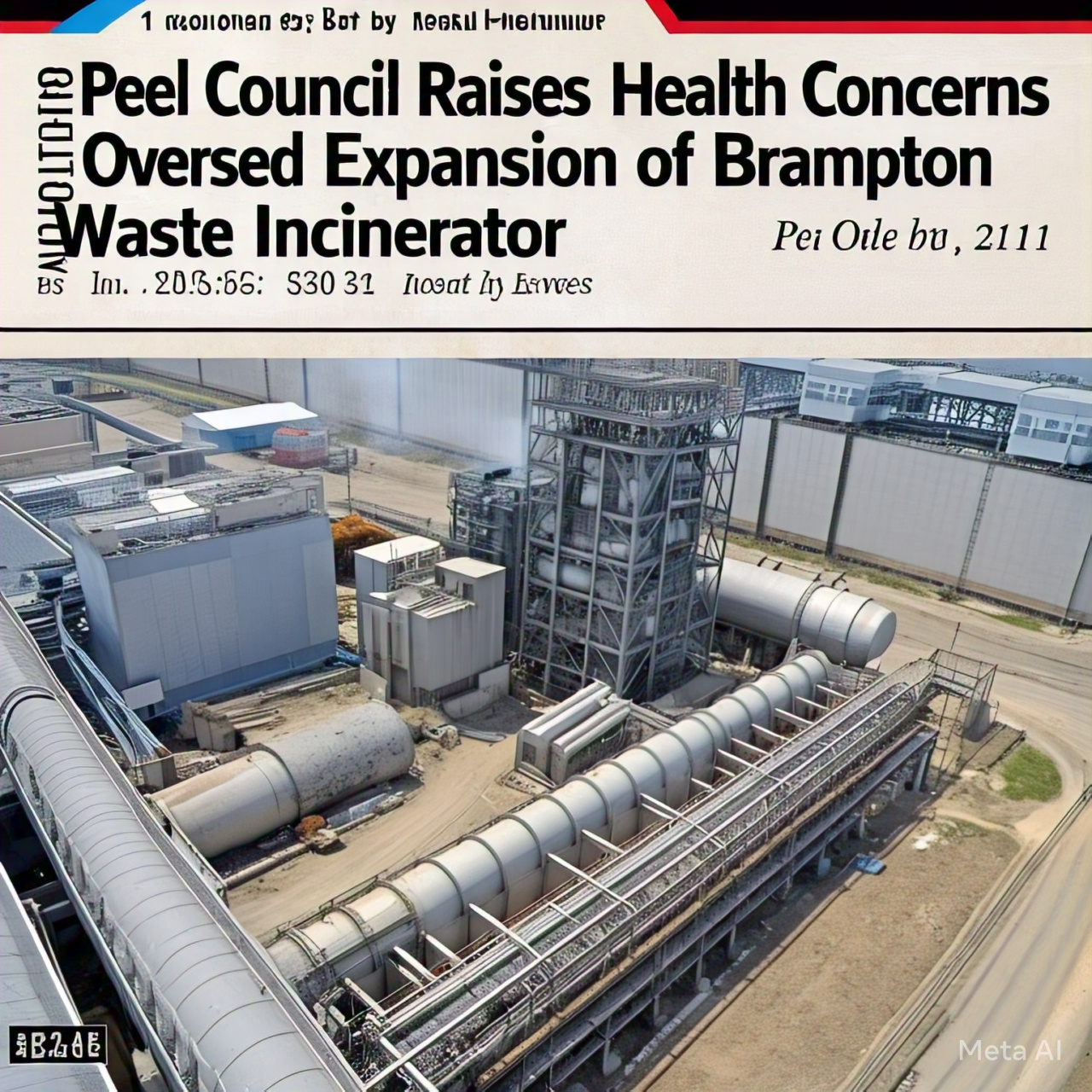Peel Region’s public health officials are raising red flags over a proposed major expansion of a Brampton waste incinerator, warning it could significantly harm air quality and increase health risks for nearby communities.
The facility, operated by Emerald Energy from Waste, is seeking provincial approval to expand its processing capacity from 182,000 to 900,000 tonnes of waste per year—a fivefold increase. The incinerator, located near Bramalea Road and Highway 407, has been burning domestic, commercial, and international waste since 1992 to generate electricity and steam.
At an April 10 council meeting, Peel Public Health presented a detailed report urging the Ontario government to make any approval conditional on stricter pollution controls, independent oversight, and transparent emissions monitoring.
“The recommendation before you today is that the regional chair, on behalf of regional council, write to both the minister of the environment and the minister of health expressing concerns about the anticipated increase in air emissions associated with the expansion,” said Louise Aubin, Director of Health Protection at Peel Region.
While the Region’s original report indicated Peel doesn’t send waste to the facility, Aubin clarified that approximately 20,000 tonnes of Peel’s waste is incinerated there annually.
Peel Public Health conducted an air quality and human health risk assessment to evaluate the expansion’s potential impact on surrounding communities. The study included nearby locations such as a sports field 700 metres away and an apartment complex 1.6 kilometres from the incinerator. It found that pollutants like nitrogen oxides and trichloroethylene could exceed health safety benchmarks at these locations under modelled conditions.
The expansion is also expected to increase levels of toxic pollutants such as dioxins, furans, mercury, cadmium, and sulphur dioxide—chemicals known to accumulate in soil, plants, and animals and pose long-term health risks.
According to the report, nearby communities already experience high rates of chronic health conditions, including diabetes, COPD, heart disease, and cerebrovascular disease. These neighbourhoods are home to many racialized, low-income, and unemployed residents, who often have limited access to healthcare and public information about environmental hazards.
“Reducing community exposure to any additional pollutant aligns with our goal of decreasing health inequities across Peel,” Aubin stated.
The report also warned of a projected sixfold increase in greenhouse gas (GHG) emissions, which would worsen climate-related health impacts already being felt in the region.
In response, Emerald Energy from Waste defended the expansion, arguing that emissions would remain within, or only slightly exceed, provincial and federal limits, and that any increases would be too minimal to pose measurable health risks.
“The Human Health Risk Assessment concluded that the redeveloped facility will not result in increased levels of dioxins, furans, mercury, and cadmium,” the company said in a written response.
Emerald also challenged the Region’s estimate of GHG increases, suggesting the expansion could actually lower overall emissions by diverting waste from methane-producing landfills.
Environmental groups disagree. Karen Wirsig of Environmental Defence called incineration “a terrible answer to Ontario’s waste problem” and praised Peel Public Health’s recommendation to explore alternative strategies focused on waste reduction rather than disposal.
A coalition of environmental organizations, including Environmental Defence, Sierra Club Peel, and the Canadian Association of Physicians for the Environment, submitted a joint letter urging Peel councillors to formally oppose the expansion. Their demands include independent soil and wildlife testing, publicly accessible multilingual health information, and broader adoption of waste-reduction policies, such as better recycling, reuse programs, and organics collection.
The final decision on the project now lies with the Ontario Ministry of the Environment, Conservation and Parks, following the facility’s completion of the province’s environmental screening process.

Leave a Reply